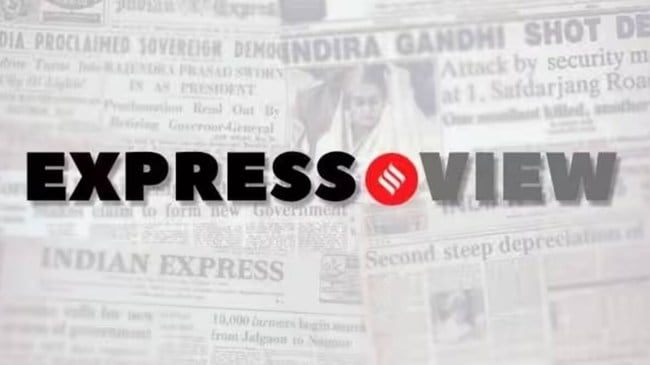Opinion After easing of food inflation, the cooling effect
Much will now depend on how the monsoon unfolds
 How the trajectories of prices and growth evolve will determine further policy action.
How the trajectories of prices and growth evolve will determine further policy action. Retail inflation, as measured by the consumer price index, plunged to a multi-year low of 2.82 per cent in May 2025, according to the latest data from the National Statistics Office. This is, in fact, the lowest recorded inflation after February 2019. With this latest print, retail inflation has averaged just under 3 per cent in the quarter so far (April-May). This is in line with the RBI’s expectations. In the Monetary Policy Committee’s June meeting, the central bank had pegged inflation at 2.9 per cent in the first quarter.
The decline was, in part, due to softening food inflation. The moderation in the food price index was led by vegetables (-13.7 per cent) and pulses (-8.22 per cent), even as oils, fats and fruits have registered double-digit inflation. The agricultural sector had fared well last year — it had grown by a robust 4.6 per cent — with the benefits showing in the rabi crop. Much will now depend on how the southwest monsoon unfolds. As on June 12, rainfall during the season has been 33 per cent below its long-term average. This will decide the fate of the kharif crop, the sowing for which has commenced. On the other hand, core inflation, which excludes the volatile food and fuel components, remained stable at around 4.3 per cent. Inflation, though, remains high in the personal care and effects category. In an earlier report, analysts at Nomura had noted that “muted core inflationary pressures likely reflect lower global commodity prices, India’s increased reliance on Chinese imports, weak domestic growth, and muted second-round effects through lower household inflation expectations and wage growth”. With this latest print, inflation has stayed below the RBI’s target of 4 per cent for four consecutive months.
In its last meeting, the RBI’s Monetary Policy Committee had lowered the benchmark repo rate by 50 basis points. Since February, the MPC has cumulatively cut rates by 100 basis points, bringing down the repo rate to 5.5 per cent. Alongside, the central bank had also lowered the cash reserve ratio by 100 basis points, a move designed to aid policy transmission. At the same meeting, however, RBI Governor Sanjay Malhotra also noted that “monetary policy is left with very limited space to support growth”. As per the central bank’s projections, inflation is likely to slowly edge upwards this year, averaging just about 3.7 per cent, even as some analysts expect it to be lower. The MPC is thus likely to adopt a wait-and-watch approach. Greater clarity will emerge on the monsoon over the coming weeks and months. This will have implications for food output and prices. How the trajectories of prices and growth evolve will determine further policy action.






